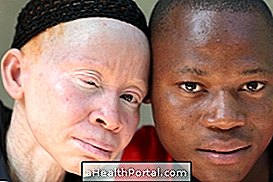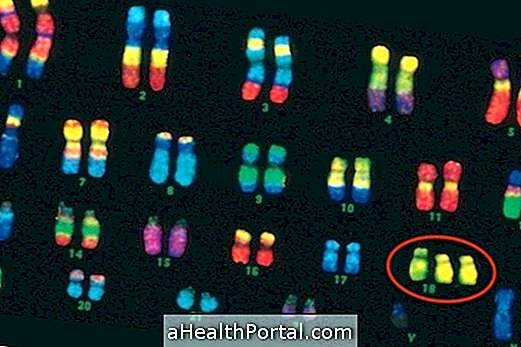Albinism is a hereditary genetic disease that causes the body cells not to be able to produce Melanin, a pigment that when it does not exist causes a lack of color in the skin, eyes, hair or hair. The skin of an Albino is usually white, sensitive to the sun and fragile, while the color of the eyes can range from very light blue almost transparent to brown, and this is a disease that can also appear in animals such as the orangutan, for example.
In addition, albinos are also subject to some diseases, such as vision problems such as strabismus, myopia or photophobia due to the clear color of the eyes or skin cancer caused by lack of skin color.


Types of Albinism
Albinism is a genetic condition where there may be total or partial absence of pigmentation and it can affect only some organs, such as the eyes, in these cases called ocular albinism, or it can affect the skin and hair, being in these chaos known as Cutaneous albinism . In cases where there is a lack of pigmentation throughout the body, this is known as oculocutaneous albinism .
Causes of Albinism
Albinism is caused by a genetic change related to the production of Melanin in the body. Melanin is produced by an amino acid known as Tyrosine and what happens in the albino is that this amino acid is inactive, so there is little or no production of Melanin, the pigment responsible for giving color to the skin, hair and eyes.
Albinism is a hereditary genetic condition that can be passed from parents to offspring. It is necessary that a gene mutated from the father and another from the mother be inherited to make the disease manifest. However, an albino person may carry the albinism gene and not manifest the disease, since this disease only appears when this gene is inherited from both parents.
Diagnosis of Albinism
The diagnosis of albinism can be made from observed symptoms, lack of color in the skin, eyes, hair and hair, but can also be done through laboratory genetic tests that identify the type of albinism.
Treatment and Care for Albinism
There is no cure or treatment for albinism because it is a hereditary genetic disease that is due to a mutation in a gene, but there are some measures and care that can significantly improve the life of Albino, such as:
- Wear hats or accessories that protect the head from the sun's rays;
- Wear clothes that protect the skin well like long-sleeved shirts;
- Wear sunglasses to protect your eyes from the sun's rays and to avoid sensitivity to light;
- Pass sunscreen of SPF 30 or more before leaving home and exposing yourself to the sun and its sun rays.
Babies with this genetic problem should be monitored from birth and follow-up should be lifelong so that their health status can be regularly assessed, and the albino should often be followed up by a dermatologist and an ophthalmologist.
The albino when sunbathing almost does not get tanned, being only subject to possible sunburn and therefore, whenever possible direct exposure to the sun's rays should be avoided to avoid possible problems such as skin cancer.




















